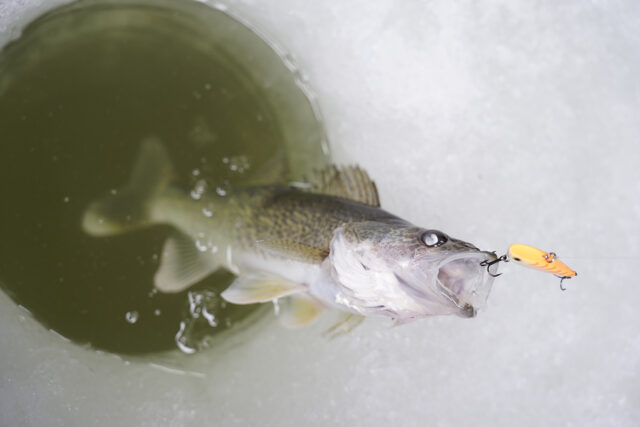Doug Leier: Catch-and-release isn’t always the best choice for fishingDoug Leier:

Guest post from North Dakota Game & Fish outreach biologist Doug Lier.
If you don’t fish, what I’m about to say won’t sound logical: Catch-and-release isn’t always the best choice for fishing.
What?
The short answer is when you catch and release a fish and the fish doesn’t end up surviving, then releasing a fish back into the water can do more harm than good.
Stay with me.
For most situations, catch-and-release remains a tried-and-true approach to long term fisheries conservation. The practice of catching the fish, followed by a quick and healthy release, will keep the fish in the population while allowing anglers to continue fishing.
But what if you catch a fish and don’t realize some injuries or biological changes may result in the fish dying. This misunderstanding can add up.
The unintended results of fish mortality spread out over the entire angling community over the
course of years can be reduced if anglers intentionally assess the entire catch-and-release philosophy and practice.
The North Dakota Game and Fish Department, no matter the time of year, recommends that anglers do not release fish caught in 30 feet or more of water because fish reeled in from those depths have a greater chance of dying if released.
Fish caught in deep water may not survive because of the extreme change in water pressure, which causes the swim bladder to expand. When that happens, fish can no longer control their balance in the water column.
Other internal injuries, such as rupturing of organs and bleeding, are also possible for fish caught from deep waters.
Devils Lake ice anglers commonly catch yellow perch in 30-45 feet of water during the winter months. Game and Fish does not discourage anglers from fishing at those depths, but the agency does ask anglers who target fish in deeper water to make a commitment to keep what they catch. And once they reach their limit, anglers should stop fishing at that depth to avoid killing more than their limit of fish.
Here are a few pointers and tips for proper catch-and-release in general:
Land the fish quickly and don’t play it to exhaustion.
Set the hook quickly to reduce the likelihood the fish will swallow the bait.
Don’t put your fingers in the eyes or gills.
Avoid removing mucous or scales.
Get the fish back in the water as quickly as possible. In winter, subfreezing temperatures are an injury factor in addition to lack of oxygen intake when fish are out of the water.
If the hook is deep within the fish or cannot be removed quickly, cut the line close to the fish’s mouth.
Back the hook out the opposite way it went in.
Use needle-nose pliers, hemostats or a hook-out to remove the hook and protect your hands.
Try to resuscitate an exhausted fish by moving it back and forth to force water through its gills.
Anglers want to enjoy their fishing while at the same time implementing the best practices for efficient catch and release. Releasing a fish that will not likely survive defeats the purpose, and while there’s no 100% guarantee these practices will ensure survival, they will increase the odds.




